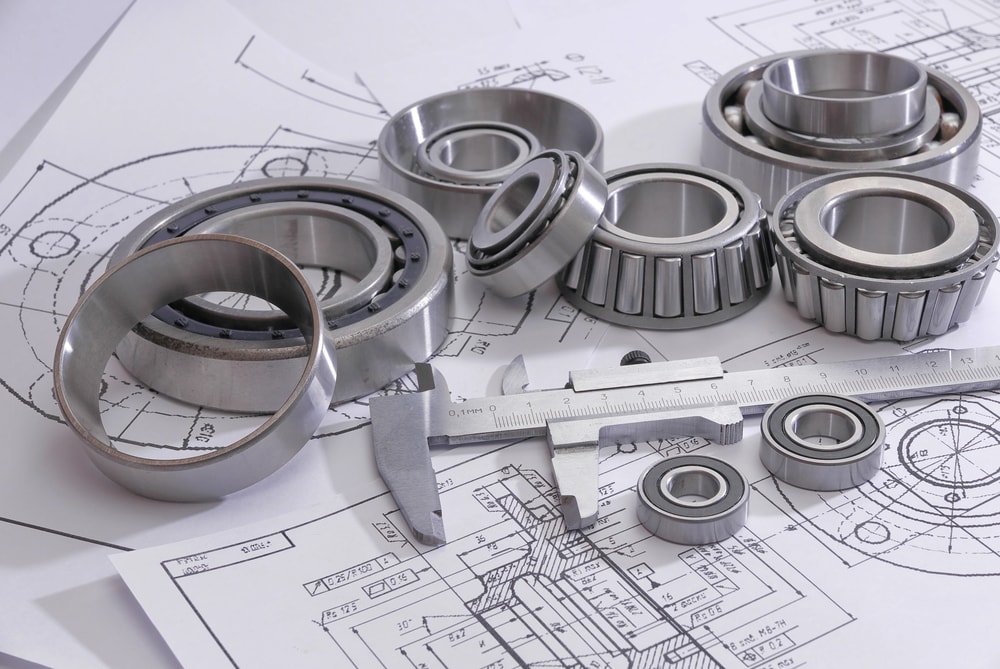
Symptoms of Faulty or Failed Wheel Bearings
Content
Common signs include abnormal tire wear, grinding or roaring in the tire area, steering wheel vibration, and wheel play.
One of the most underestimated, but very important parts of the drive axle and steering assembly are the wheel bearings. Each wheel in your car is attached to a hub, and inside that hub is a set of lubricated wheel bearings that allow your tires and wheels to spin freely without generating too much heat. They are designed to last a very long time, but over time they lose their lubricity, wear out and need to be replaced. They can even become loose due to wear inside the wheel hub assembly. If they break completely, it can cause the wheel and tire combination to fall off the vehicle at speed, resulting in a very unsafe driving situation.
Prior to 1997, most cars, trucks, and SUVs made and sold in the US had an inner and outer bearing on each wheel that were recommended to be serviced every 30,000 miles. As technology improved, new cars were fitted with "maintenance free" single wheel bearings designed to extend wheel bearing life without the need for maintenance. From time to time, these "indestructible" wheel bearings wear out and need to be replaced before they fail.
Here are 4 warning signs that are fairly easy to recognize and indicate a worn wheel bearing that needs to be replaced.
1. Abnormal tire wear
There are many individual mechanical problems that can lead to abnormal tire wear, including under- or over-inflation, CV joints, struts and dampers, and misalignment of the suspension system. However, one of the most common sources of uneven tire wear is worn wheel bearings. Wheel bearings rarely wear evenly. Thus, if the left tire wears more, it may indicate a problem with the left wheel bearing. However, the wheel bearings must be replaced together; if the problem is with one side, it is necessary to replace the other wheel bearing on the same axle. If you or your tire fitter notice that one side of your vehicle's tires is wearing faster than the other, see an ASE certified mechanic to road test and diagnose the cause of that tire's wear. In many cases it could be something else or minor, but you don't want to risk a wheel bearing failure.
2. Roaring or grinding noise in the area of the tires
Finding a bad wheel bearing is very difficult because it doesn't happen often and when they wear out it can happen quickly. That being said, one of the warning signs of a worn wheel bearing is a loud grinding or roaring noise coming from your vehicle's tire area. This is caused by excess heat building up inside the wheel bearing and losing most of its lubricating properties. Basically, you hear a metallic sound. It's also common to hear it from one particular wheel rather than both sides at the same time, indicating uneven wear. As with the problem above, if you notice this warning sign, contact an ASE certified mechanic as soon as possible so they can diagnose the source of this sound and fix it before it becomes a safety issue.
You may also hear clicking, popping, or clicking sounds, which may indicate a bad wheel bearing. Although this is usually indicative of CV joint wear, a clicking or popping sound can be caused by improper bearing clamping. This can be especially noticeable when making tight turns.
3. Steering wheel vibration
Another common symptom of other mechanical drive and steering problems is steering wheel vibration, which can be caused by worn wheel bearings. Unlike tire balancing issues that usually show up at higher speeds, steering wheel vibration due to bad bearings will be noticeable at lower speeds and will gradually increase as the vehicle accelerates.
4. Extra play in the wheels
The average car owner does not often have to diagnose. However, if you have a tire up or the car is on a hydraulic lift, you can check this yourself. Grasp the wheel on opposite sides and try to rock it back and forth. If the wheel bearings are good, the wheel will not "wobble". However, if the tire/wheel assembly moves back and forth, it is most likely due to worn wheel bearings, which should be replaced as soon as possible.
Also, if you notice that the vehicle is hard to roll when the clutch is depressed or the vehicle is in neutral, this could be due to worn wheel bearings, which creates friction and can fail.
Any time you notice any of the above signs of a worn or failing wheel bearing, see a trusted ASE certified mechanic who will road test, diagnose and replace the wheel bearings as needed.

